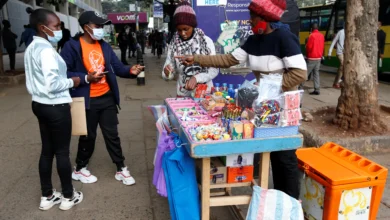
Safaricom’s mobile money wallet, M-Pesa hit a Ksh.100 billion mark in revenue, to stand out as the telco’s top revenue contributor 15 years after its establishment.
M-Pesa was introduced in Kenya on March 6, 2007.
According to Safaricom’s 2021 full year financial report released Thursday, M-Pesa revenue surged by 38.3 percent to Ksh.107.7 billion from Ksh.86.2 billion in 2021.
This was due to improved business activity after Kenya fully reopened the economy.
Total M-Pesa transactions value grew 34.0 percent year-on-year to Ksh.29.55 trillion and the volume of transactions grew 34.9 percent to 15.75 billion.
Kenya now remains M-pesa’s most active market accounting for more than 30 million of the 51 million customers across Kenya, Tanzania, the Democratic Republic of Congo, Mozambique, Lesotho, Ghana and Egypt.
The service which has been ranked as Africa’s largest fintech processes more than 61 million transactions a day across the different markets it operates in.
Lipa Na M-Pesa service surged 63.4 percent to 500,000.
In April this year, Safaricom included rival networks, Airtel, and Telkom in its Lipa Na M-Pesa cashless payment service.
The shift is aimed at improving financial inclusivity through user convenience in a concept known as interoperability.
M-Pesa has over 3.2 million businesses accepting payments under its portfolio, while the M-Pesa business app has about 100,000 active businesses.
Safaricom launched M-Pesa App on June 23, 2021.
The new app allows customers to send money to more than one recipient at a go and can be used while in offline mode.
“The M-Pesa business app will enable and empower them (customers) with powerful tools to manage and grow their businesses. Ultimately, our aim is that for every Ksh.1 a business collects on M-Pesa, they should be able to make an extra Ksh.5,” said Safaricom chief executive Peter Ndegwa.
M-Pesa revenue is speculated to surge further as Safaricom readies commercial operations in its new market, Ethiopia. Ethiopia has a population of over 115 million people.





